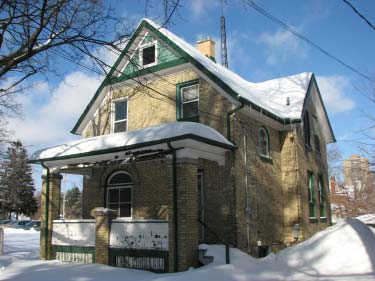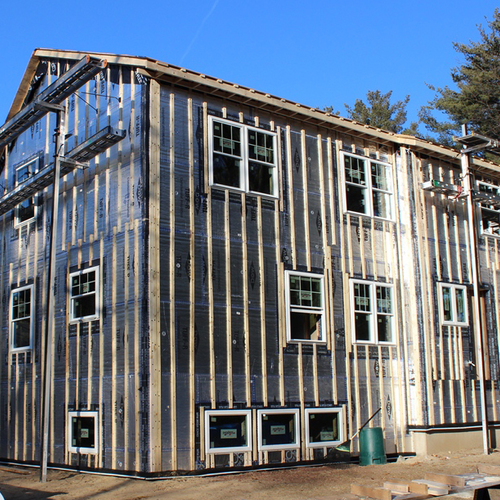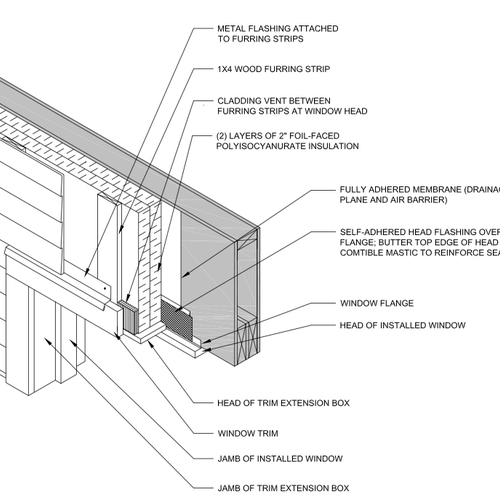Image Credit: REEP Waterloo Region
Image Credit: REEP Waterloo Region Located on the same street as the net-zero-energy retrofit, this home’s energy efficiency was improved by 50%. The cost of the retrofit that cut this home’s energy usage by 50% was about $24,000 USD.
The Residential Energy Efficiency Project, a nonprofit environmental group that advances residential energy efficiency in the Waterloo Region of Ontario, Canada, decided a couple years ago to deploy one of the most potent, not-so-secret weapons in the battle to steer homeowners toward deep-energy retrofits: the demonstration home.
Or in this case, two demonstration homes, both many decades old, formerly drafty, about the same size, and on the same street.
A recent post on Treehugger provides in-the-walls details about the upgrades to the homes, one of which was retrofitted to reduce its energy consumption by 50%, the other to net-zero-energy performance. The latter features multiple heating systems (solar hot water, a hydronic boiler, and a ground-source heat pump) so that their operation can be explained to people who visit the house and so the systems’ relative efficiency can be measured and compared over time. Without renewable-energy sources, the NZE home’s annual heating costs, which had been averaging $2,800, are expected to be about $300.
Show and tell
The Residential Energy Efficiency Project, or REEP, hopes the retrofits will inspire homeowners who visit the houses to invest in retrofits in their own homes. Both houses are relatively small (originally about 1,000 sq. ft. each) and several decades old, which makes them representative of much of the region’s existing housing stock. But REEP also wants those who tour the homes to leave with a better understanding of the in-the-walls-and-basement systems responsible for the buildings’ upgraded comfort and quiet, and how they can go about securing financing and hiring contractors to do the work.
One portion of basement wall in the NZE house, for example, has been insulated with polyurethane foam to R-12 (current code), R-24 (an insulation upgrade option covered by retrofit grants available in Canada), and the R-38 insulation system used in the rest of the basement. SEEP will measure the heat loss and related heating costs for each of the three sections over time. One by-product of the upgrade: the 250-sq.-ft. basement is now a spare room, as habitable as the rest of the house.
While the cost total for the all-out NZE retrofit is expected to be high (on May 14 REEP celebrated completion of the project), the retrofit of the first home has been calculated at about $24,000 U.S. If REEP’s strategy of showing rather than just telling bears out, many of those who visit the houses will come away with a pretty firm grip on how they can achieve similar results.
Contact REEP
to learn more about these demonstration homes
.
Weekly Newsletter
Get building science and energy efficiency advice, plus special offers, in your inbox.















0 Comments
Log in or create an account to post a comment.
Sign up Log in